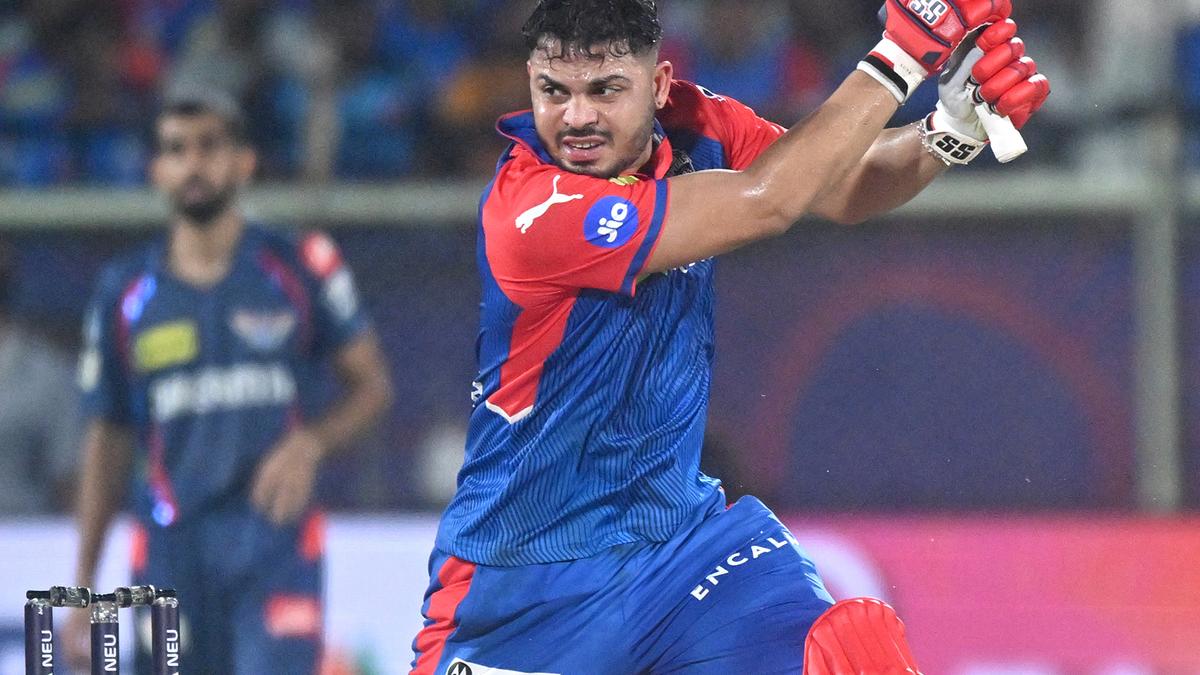
Impact Player — a tussle between evolution and a level-playing field Premium
The Hindu
Vikram Solanki's impact as the Director of Cricket with Gujarat Titans and the evolution of the Impact Player in cricket.
Followers of the Indian Premier League will identify Vikram Solanki as the Director of Cricket with Gujarat Titans, the champions on debut in 2022. The Udaipur-born Solanki, who celebrated his 49th birthday on Tuesday, played 51 ODIs and three T20Is for England between 2000 and 2007 with modest returns, but he will go down in history books as the first ‘Super Sub’ in international cricket.
The Super Sub was introduced in One-Day International cricket in July 2005, sending hordes of statisticians, mainly, and scorers across the world into a tizzy. Cricket was always supposed to be 11 versus 11; the Super Sub would make it 12 vs 12 or, in many instances 12 vs 11. How was this cricket?
As an experiment, the Super Sub idea lasted only eight months. Fundamentally flawed because it magnified rather than neutralised the effect of the toss, it met its logical denouement in March 2006 with numerous luminaries, among them then Australian captain Ricky Ponting, exhorting a rollback to the original 11 vs 11 faceoff. Because the Super Sub had to be named before the toss, it negated the advantage for the captain who lost the toss and conferred a distinct edge to the side that hit it lucky with the coin. The decision makers within the International Cricket Council acted swiftly, though had they been a little more prudent in the lead-up to the unleashing of the Super Sub, it might not have been the worst idea, never mind if the scoring/statistician community was up in arms.
More than a decade later, the concussion sub came into the picture, in 2019. The catalyst for this move was undoubtedly the tragic incident involving Phil Hughes in a Sheffield Shield encounter towards the end of 2014. The prime example of a concussion sub emerging as one of the leading batters for his country is Marnus Labuschagne, the first such player in Test cricket when he came on to replace an injured Steve Smith, who was struck on his helmet by Jofra Archer in the Lord’s Test of August 2019. Labuschagne made 59 in his first hit in Test cricket, and despite his recent travails, averages 46.76 from 57 Tests.
The concussion sub is a permanent feature now, used – sometimes misused or abused, one might say -- in all formats across all levels but a novelty that the IPL sprung on the game is yet to catch on. In a more nuanced variant of the discarded Super Sub, the IPL permitted the use of an Impact Player from the 2023 edition onwards. Outside of the designated 11, each side can nominate five reserves, from whom the Impact Player can be summoned at any stage. Because this was delinked from the outcome of the toss – any of the five could be used in that capacity, so long as only four overseas players were part of the 12 – it provided a greater level-playing field compared to the Super Sub, though the bowling community might hold a dim view on this development.
Ironically, while the Impact Player has freed up the minds of batting groups and spawned a dramatic increase in the rate of scoring and team totals, the thinking behind this innovation was to bolster bowling depth. In theory, teams could swap a batter for a specialist bowler when they defended a target, thereby precluding the need to rely on the infamous ‘bits-and-pieces’ players. In reality, it has triggered a change in mindsets and attitudes from a batting perspective. The Impact Player might not always make an impact, but the luxury of being able to call up an additional batting resource in the event of a collapse has emboldened teams to shed conservatism and concentrate on all-out attack. That the top five scores of all time in the IPL have come since the start of the 2024 edition is no coincidence.
The once-preferred approach of beginning carefully and then exploding in the second half has now been emphatically thrown out the window. There are no more sighters even if the new ball is swinging or nipping around. No one has benefitted from this more than Sunrisers Hyderabad, who have produced scores of 287, 286 and 277 in the last season and a quarter, taking aggression to ridiculously new heights and marrying it with a consistency that makes them comfortably the most feared batting unit of the competition.

 Run 3 Space | Play Space Running Game
Run 3 Space | Play Space Running Game Traffic Jam 3D | Online Racing Game
Traffic Jam 3D | Online Racing Game Duck Hunt | Play Old Classic Game
Duck Hunt | Play Old Classic Game











